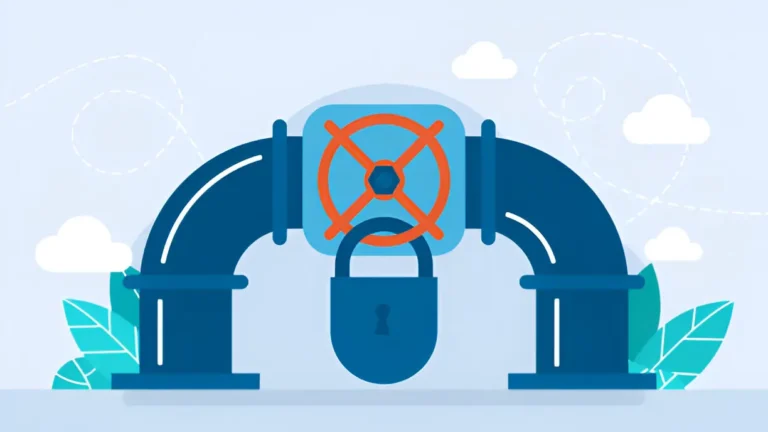Every home and commercial property relies on one crucial system that’s often hidden from sight: plumbing. It’s one of those things we don’t think about until it goes wrong. Whether it’s a burst pipe on a frosty morning or a slow, silent leak that suddenly floods the basement, plumbing emergencies have a nasty habit of catching us off guard.
The journey from detecting a leak to fully locking down a solution is more than just a matter of quick fixes. It’s a blend of early awareness, smart tools, and, when needed, professional intervention. While some repairs can be handled with confidence and the right equipment, others demand a trained eye and advanced know-how. In either case, peace of mind comes from understanding your options and ensuring you have access to both reliable products and professional support for water systems.
The Drip That Destroys
It usually starts small. Maybe you hear a faint tapping sound behind the wall or notice a damp patch under the kitchen sink. You wipe it up and forget about it, chalking it up to condensation. But left unchecked, even the tiniest leak can escalate into a full-blown crisis.
Water damage doesn’t play fair. It seeps into drywall, warps wood, rusts metal, and fosters mold that creeps through the very air you breathe. It doesn’t take long before you’re dealing with not just a pipe issue, but a structural one. That’s why early detection is everything. If you see signs like reduced water pressure, water stains on walls or ceilings, or inexplicably high water bills, it’s time to investigate.
The good news? Modern pipe repair systems are more advanced than ever, giving property owners more control. But that doesn’t mean it’s all DIY-friendly. Knowing when to fix and when to phone is half the battle.
Know Your Tools Before You Tackle the Problem
Just as no two homes are alike, no two plumbing fixes are either. A cracked copper pipe under your slab is an entirely different beast from a pinhole leak in your garage. And while duct tape and prayer may hold overnight, real solutions need the right materials.
Pipe clamps and couplings have become essential for both homeowners and pros alike. These aren’t the rusty relics of decades past; they’re engineered to handle pressure, temperature variation, and corrosion. They can serve as a temporary fix or even a long-term solution, depending on the severity and location of the damage.
These products are designed with performance and ease in mind. Many models offer quick installation, rubber gaskets for tight seals, and stainless-steel components for lasting durability. The key is choosing the right one for your specific application, whether it’s a 1-inch copper pipe or a 6-inch industrial main. And while the market is flooded with cheap imitations, only high-grade repair hardware should ever be trusted in a system that delivers your daily water. That’s what makes the difference, according to blair supply usa.
DIY vs. Pro: When to Roll Up Your Sleeves (and When to Step Back)
Something is empowering about fixing a leak with your own two hands. But empowerment doesn’t always equal expertise. A clamp may stop the water, but if the pipe is corroded from the inside out, you’re not solving the real problem; you’re just pressing pause.
You should take action to limit damage when a leak is discovered. Shutting off the main valve, drying out the area, and applying a temporary clamp are great first steps. But if the problem persists, or if it returns after each “fix,” then it’s time to bring in a professional. Plumbers don’t just patch, they diagnose. They look at the entire system, pressure test the lines, and spot hidden weaknesses you might miss.
This is especially important in older homes, where pipes may be layered with decades of buildup, or where past repairs were done to code standards that no longer apply. A seasoned professional not only addresses the issue at hand but ensures your plumbing won’t give you more surprises in six months.
The Silent Saboteurs: Hidden Plumbing Hazards
Even when everything looks dry on the surface, water has a way of sneaking into places it shouldn’t be. A loose joint behind a wall or a hairline fracture in the foundation pipe can go unnoticed for months, until the wood starts to rot or mold begins to bloom.
These “silent leaks” are more common than most people think, especially in homes that haven’t been inspected in a while. Seasonal changes, shifting foundations, and even DIY projects can stress the plumbing system. A single nail through drywall in the wrong place can pierce a water line without anyone realizing, until the damage has spread.
This is why even after a successful repair, regular inspections are a smart move. If you’ve leaked once, your system might be more vulnerable than you realize.
Long-Term Prevention Starts with the Right Support
Plumbing isn’t just a reactive game. Most disasters can be avoided with a proactive mindset. Replacing aging joints, upgrading old pipes, and investing in pressure regulators can all save you thousands down the line. But perhaps the most important step is having a trusted support system, both in tools and in technicians.
For the DIY crowd, stocking up on quality repair couplings and clamps is a no-brainer. Keep a basic kit on hand, just like you would a fire extinguisher or first-aid kit. But equally, know your limits. When in doubt, call for help. It’s one thing to tighten a clamp, it’s another to re-route a water line or diagnose pressure anomalies.
Plumbing issues can’t always be predicted, but how you respond makes all the difference.
Read more: Mastering Precision: How Modern Structural Removal Is Changing the Game
Behind the Walls: The Hidden Craft of Power and Data That Keeps Modern Life Flowing
How to Turn a Backyard into a Resort-Style Pool Paradise Without Leaving Home
